Story by Maggie Boleyn
Photos by Bernie LaFramboise
Hazel Park is poised to become the first city in the state of Michigan to require microchips for dogs in place of a regular license. In 2015, San Antonio, Texas, became the largest US city replacing standard pet licenses with the implanted chip.
“We are seeing an increase in the number of dogs found in Hazel Park,” Bethany (Beth) Holland said. “We know they’ve got people, and we want to increase the number of reunions with owners.” She noted that without identification, “It’s a miracle they get back home.”
Holland has served as Volunteer Team Leader at the Hazel Park Animal Control Shelter, and was recently named as a Councilperson for Hazel Park.
Holland said that the idea for the microchip requirement has been discussed since 2015. City ordinances will 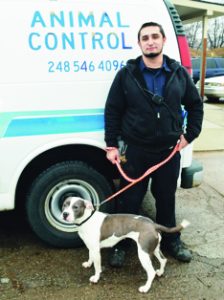 have to be changed to reflect the microchip mandate for dogs, but the rollout is planned for April 2017. Currently, there are no plans to require cats to have the rice-grain sized microchip device implanted. Holland promised that there will be ample advance notice given to residents regarding the new regulations.
have to be changed to reflect the microchip mandate for dogs, but the rollout is planned for April 2017. Currently, there are no plans to require cats to have the rice-grain sized microchip device implanted. Holland promised that there will be ample advance notice given to residents regarding the new regulations.
Supporters of the implanted devices say that registered microchips increase the odds of your pet returning home. Microchips have unique numbers that function as your pet’s ID. If your pet becomes lost, most veterinarians and all animal shelters have special scanners that can “read” the microchip. Universal scanners provide the best chance of reading microchips.
The risk of an animal shelter or vet not being able to detect a microchip is very low. Rarely, microchips, which are designed to last for 25 years, can fail and become undetectable. Human error can also lead to a chip not being read as can faulty scanners, or struggling, aggressive or obese animals. According to the Humane Society, while universal scanners can detect a competing company’s chip, they may not be able to correctly read the data.
Collars with ID tags can fall off, thereby losing your contact information. “My dog loses them all the time,” Holland confided.
Holland said microchips can be obtained at vaccine clinics, veterinary offices and at Hazel Park Animal Control. The chips are inserted with a large needle between the shoulder blades, and the animal does not need to be anesthetized for the procedure.
Prices for implanting the device vary and generally range from $10-$20 dollars. Depending on the microchip model chosen, there may be an annual fee charged by the microchip company to maintain current 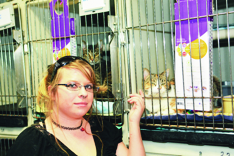 registration information. These fees also vary; and some companies may charge a one-time fee, while others require annual maintenance fees. Some chip companies will register pets with any brand of chip. The American Microchip Advisory Council is working to develop a network of registry databases to streamline the return of pets to their families.
registration information. These fees also vary; and some companies may charge a one-time fee, while others require annual maintenance fees. Some chip companies will register pets with any brand of chip. The American Microchip Advisory Council is working to develop a network of registry databases to streamline the return of pets to their families.
Holland acknowledged that potential fees of around $30 dollars per dog would hit some Hazel Park residents hard.
“We are expecting growing pains,” she said “We’re trying to figure it out. We’re basically creating the wheel.”
She said that plans are in the works to possibly vary the fee, depending on factors such as whether the dog has been altered, has lived in Hazel Park for more than six years, or already has a microchip device implanted. Holland said that the City of Hazel Park has purchased 100 microchips, and is actively seeking corporate sponsorships to help defray additional costs.
The Humane Society says that microchips do provide an extra level of protection if your pet loses his collar and tags, and are a good back-up option for pet identification, but should never be the only identification method used.
The Humane Society recommends that owners who are concerned about pets having negative reactions to microchipping, or if you have questions about microchips in general, to check with your pet’s veterinarian.



 walls. Lath in buildings has diminished since the ‘50s, and now drywall is employed in its place.
walls. Lath in buildings has diminished since the ‘50s, and now drywall is employed in its place.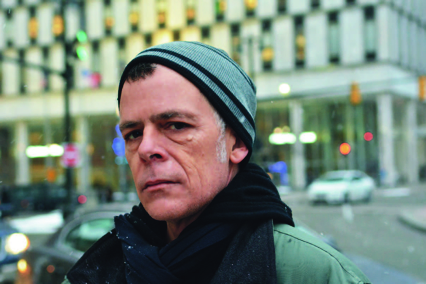
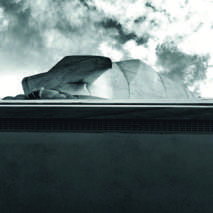 know his work as a staple of the photography scene. His photography is being exhibited at galleries and other outlets across the city and he even has a new calendar of his work out, called “The Detroit I See,” featuring stellar snapshots of the city as only Steve can produce.
know his work as a staple of the photography scene. His photography is being exhibited at galleries and other outlets across the city and he even has a new calendar of his work out, called “The Detroit I See,” featuring stellar snapshots of the city as only Steve can produce.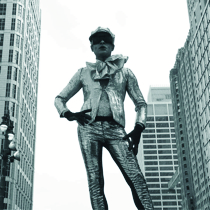 When did you start photographing and what perked your interest in photography?
When did you start photographing and what perked your interest in photography? noticing the beauty of my city, and specifically the areas that I frequent most, like I used to. It was all becoming very familiar. So, last summer I challenged myself to look at the city from different angles and perspectives. My recent show, ‘The Detroit I See’ is a selection of photographs from this project.
noticing the beauty of my city, and specifically the areas that I frequent most, like I used to. It was all becoming very familiar. So, last summer I challenged myself to look at the city from different angles and perspectives. My recent show, ‘The Detroit I See’ is a selection of photographs from this project.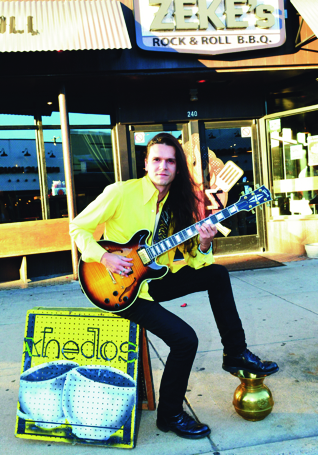
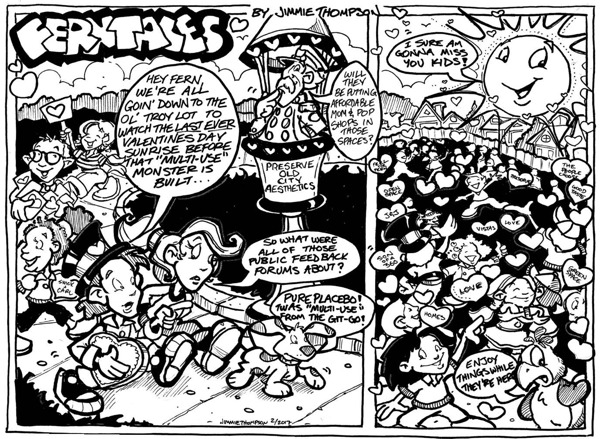
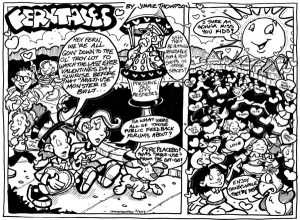
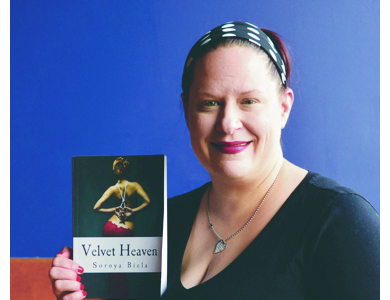
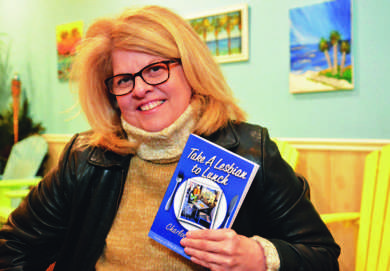


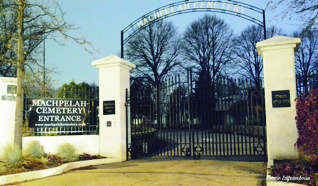
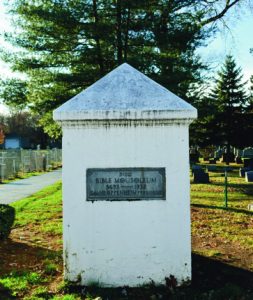 Machpelah Cemetery is worth a long, winding walk. The Jewish cemetery is located on Woodward, just south of Marshall road, across from a car dealership and surrounded by businesses. Despite the busy area, the cemetery is a very peaceful place, 24 acres of immaculate landscaping backed by the David Oppenheim Memorial park. The cemetery has 9000 garden beds and circling walking trails. Machpelah has won an America in Bloom award, as well as a Ferndale Beautification award, with good reason. There is a year-round crew that keeps Machpelah beautiful. Weeding and garden maintenance is a nonstop task, starting at one end of the park and restarting as soon as they reach the other. The crew also must level out between 300 and 500 graves and tombstones a year. Along with the tradition of having a groundskeeper on the property, Machpelah is also one of few cemeteries that hand digs each grave.
Machpelah Cemetery is worth a long, winding walk. The Jewish cemetery is located on Woodward, just south of Marshall road, across from a car dealership and surrounded by businesses. Despite the busy area, the cemetery is a very peaceful place, 24 acres of immaculate landscaping backed by the David Oppenheim Memorial park. The cemetery has 9000 garden beds and circling walking trails. Machpelah has won an America in Bloom award, as well as a Ferndale Beautification award, with good reason. There is a year-round crew that keeps Machpelah beautiful. Weeding and garden maintenance is a nonstop task, starting at one end of the park and restarting as soon as they reach the other. The crew also must level out between 300 and 500 graves and tombstones a year. Along with the tradition of having a groundskeeper on the property, Machpelah is also one of few cemeteries that hand digs each grave.